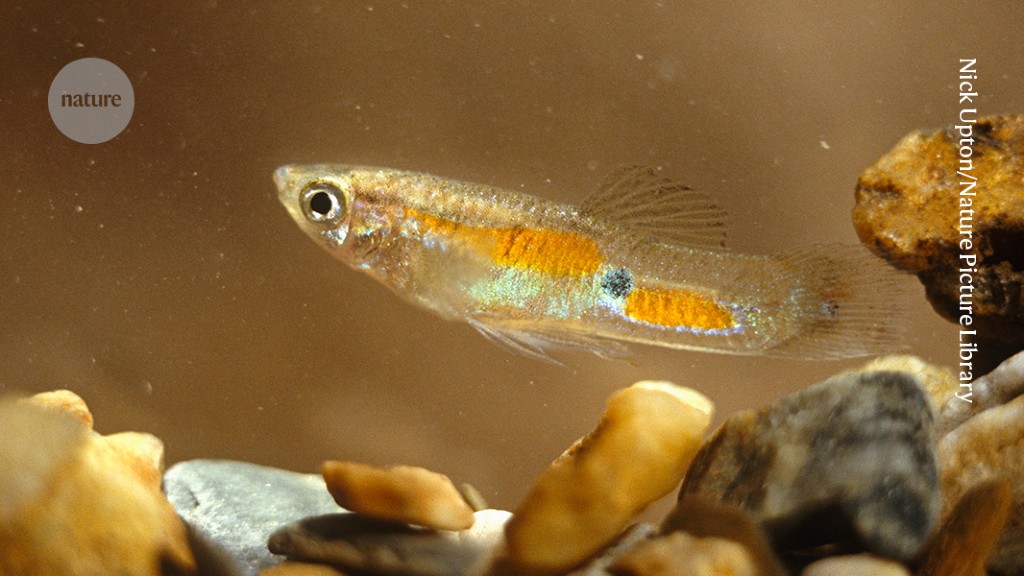Impact of Population Size on Guppy Fish Evolution
Core Concepts
The authors explore how population size influences the evolution of guppy fish, highlighting the impact of density dependence on life-history strategies and survival patterns.
Abstract
As populations expand, a decline in growth rate due to density dependence alters species dynamics. Travis et al. studied guppy fish on Trinidad, revealing significant variations in life-history strategies based on population fluctuations. These differences affect juvenile and adult survival rates, sexual maturity timing, and offspring numbers.
How population size shapes the evolution of guppy fish
Stats
"As populations grow, a decrease in their growth rate, occurring as a phenomenon referred to as density dependence, affects the dynamics of most species."
"The authors demonstrate that variation in population fluctuations can lead to the evolution of large differences in life-history strategies in different populations affecting the pattern of survival of juveniles or adults, the timing of sexual maturity and the numbers of offspring produced."
Quotes
Key Insights Distilled From
by Bern... at www.nature.com 02-06-2024
https://www.nature.com/articles/d41586-024-00276-5
Deeper Inquiries
How does density dependence impact other species beyond guppy fish?
Density dependence, as observed in the population dynamics of guppy fish, can have significant impacts on various species beyond just guppies. For example, in populations of predators such as wolves or lions, an increase in prey density may lead to more successful hunting and higher reproductive rates initially. However, as prey populations decline due to predation pressure, the predator population may also experience a decrease in growth rate due to reduced food availability. This interplay between predator and prey densities showcases how density dependence can shape the evolutionary trajectories of multiple species within an ecosystem.
What are potential drawbacks or limitations to considering population size in evolutionary studies?
While considering population size is crucial for understanding evolutionary processes, there are some drawbacks and limitations to be aware of. One limitation is that focusing solely on population size may oversimplify complex ecological interactions that influence evolution. Additionally, certain factors like genetic diversity within a population or environmental variability could play equally important roles but might be overshadowed by a sole emphasis on population size. Therefore, it's essential for researchers to consider a holistic approach when studying evolution rather than solely relying on population size metrics.
How might understanding population dynamics influence conservation efforts for vulnerable species?
Understanding the intricacies of population dynamics can greatly inform conservation efforts aimed at protecting vulnerable species. By analyzing factors such as birth rates, death rates, migration patterns, and habitat requirements within a given species' population dynamic framework, conservationists can develop targeted strategies to mitigate threats effectively. For instance, if a particular endangered bird species exhibits low reproductive success due to habitat loss impacting nesting sites, conservation efforts could focus on restoring critical habitats or implementing artificial nesting structures to boost breeding success rates. Ultimately,
this tailored approach based on comprehensive knowledge of
population dynamics enhances the effectiveness and efficiency
of conservation initiatives for safeguarding vulnerable
species from extinction risks.
0
